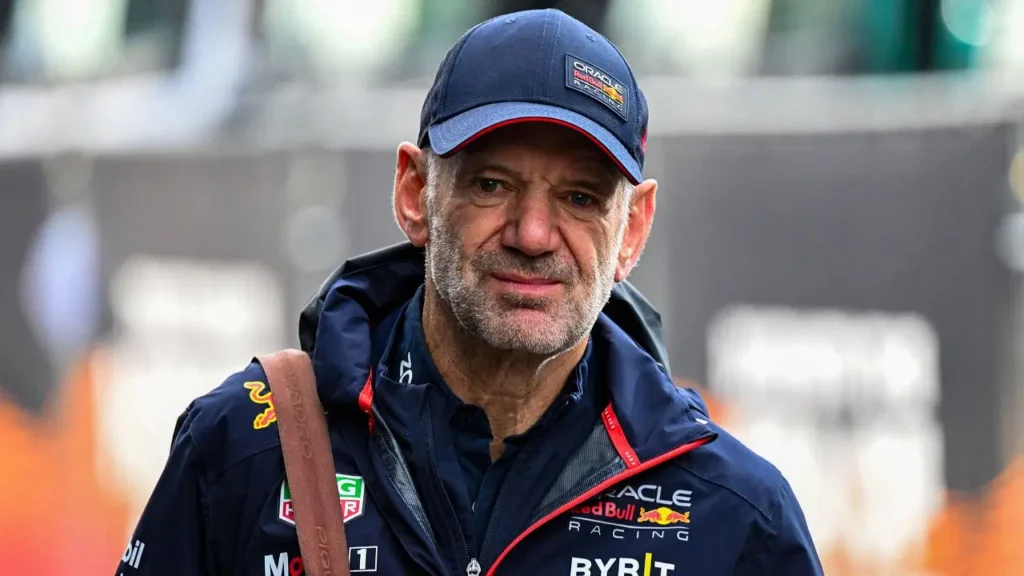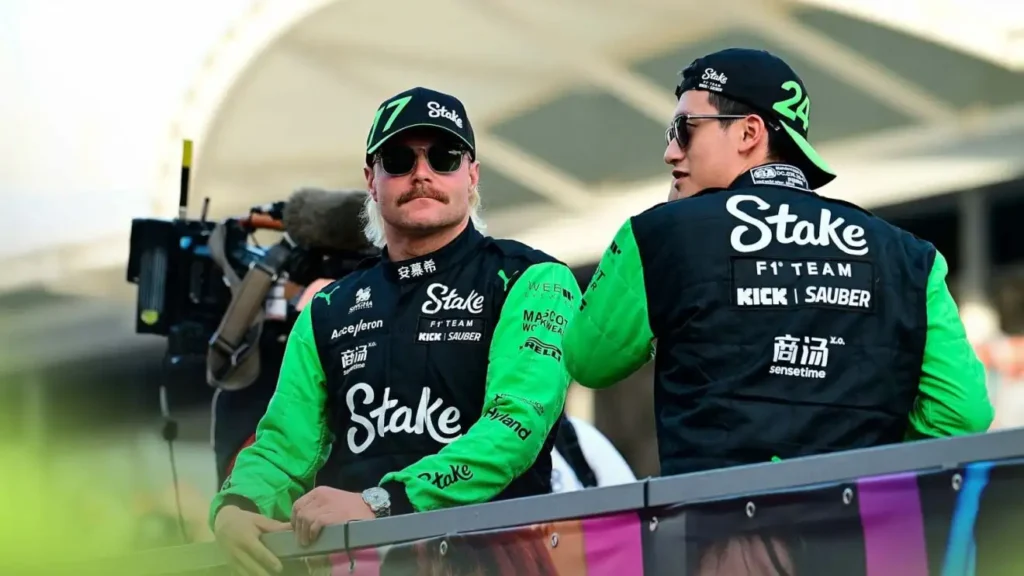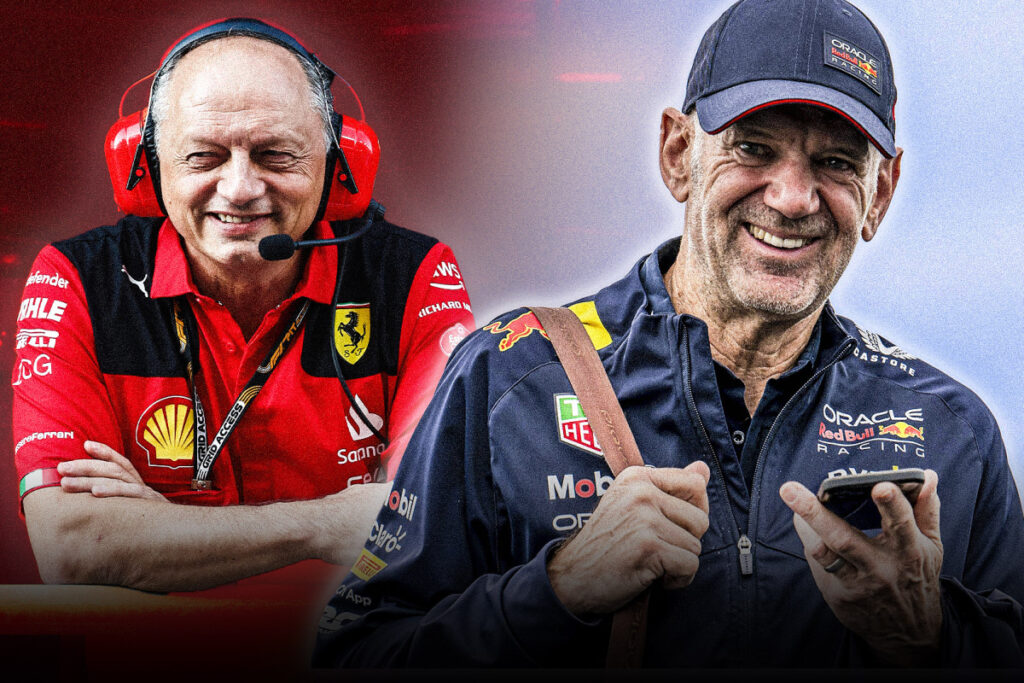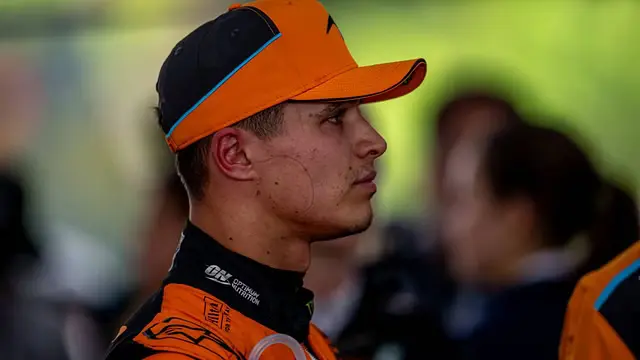In the heart of the roaring silence, where million-dollar machines scream and humanity strains against the g-force, Haas F1 exists on a razor’s edge. It’s a place where dreams are forged in fire and sweat, where the echoes of wrench on metal become a symphony of ambition. Haas F1 isn’t a team, it’s a rebellion. A rebellion against the status quo, against the limitations of what’s possible. It’s the underdog with a rocket strapped on, a challenger who bleeds innovation and roars with the insatiable hunger to conquer.
Here, on the precipice of victory and defeat, Haas F1 writes its story with every gear shift, every corner taken, every daring overtake. This isn’t just racing, it’s a visceral experience, a primal scream for glory. Hold on tight, because with Haas F1, the only guarantee is that it will leave you breathless.
From Machine Shop Maverick to Motor Racing Maelstrom: The Birth of Haas F1
The story of Haas F1 isn’t a meticulously crafted business plan whispered in boardrooms. It’s a tale of audacious dreams and a relentless pursuit of speed, born not on the hallowed grounds of Formula One, but in the grease-stained heart of an American machine shop.

Our protagonist? Gene Haas, a self-made entrepreneur who carved his empire from the unforgiving world of CNC machining. His hunger for innovation wasn’t satiated by pistons and gears; it craved the ultimate proving ground – Formula One, the pinnacle of motorsport.
The year was 2014. Haas, ever the bold visionary, saw an opportunity where others saw insurmountable barriers. He envisioned an American team on the F1 grid, a trailblazer that would challenge the established order with a potent blend of American ingenuity and fresh-faced ambition.

Gene Haas
In January 2014, Haas confirmed that he had formally submitted to the FIA his interest in entering a team in the F1 championship in 2015 or 2016
The journey wasn’t for the faint of heart. Haas defied convention, forging partnerships with established players like Dallara for the chassis and Ferrari for the power unit. He ignored the doubters who scoffed at the audacity of a newcomer taking on the F1 giants. Instead, he assembled a team of passionate individuals, hungry to prove themselves on the biggest stage.
In 2016, the dream became reality. Haas F1 wasn’t just another team on the grid; it was a testament to the unwavering spirit of innovation and the daring spirit to challenge the status quo. The roar of their engine became a battle cry, a declaration that the American flag would now fly high in the high-octane world of Formula One.
From Humble Beginnings to the F1 Spotlight: Haas and a Legacy of Speed
Gene Haas wasn’t just a businessman with a passing fancy for fast cars. His passion for motorsports ran deep, a constant hum beneath the roar of his machine shop. Even before Haas F1 burst onto the scene, his fingerprints were already on the sport.
Haas Automation, his manufacturing company, had long been a trusted supplier for established racing teams. Their high-precision CNC machines churned out vital components, the silent workhorses behind countless victories. But for Haas, this wasn’t enough. He craved a more direct connection to the adrenaline-fueled world of racing.
In the early 2000s, Haas dipped his toes into the world of NASCAR, co-founding Stewart-Haas Racing, a team that quickly rose to prominence. Victories in NASCAR’s premier Cup Series validated Haas’ understanding of speed and competition. But his ambitions soared beyond the oval tracks of America. He craved the ultimate challenge, the global stage of Formula One.

The road to F1 wasn’t paved with million-dollar sponsorships and inherited legacies. Haas, ever the resourceful entrepreneur, approached the challenge with a unique strategy. He leveraged his existing partnerships, his team’s expertise, and a streamlined operational model to create a cost-effective yet competitive entry into F1.
This unconventional approach raised eyebrows within the F1 establishment. Could an outsider, a team built not on tradition but on innovation, truly compete with the sport’s Goliaths? Haas wasn’t deterred. He saw an opportunity to not only challenge the existing order but to redefine the very notion of what it meant to be a successful F1 team.
The Mastermind and his Mechanics: The Team Behind the Haas F1 Dream
Gene Haas may be the visionary who ignited the spark for Haas F1, but no single individual conquers the summit of Formula One alone. Behind the scenes, a dedicated team of experts toiled tirelessly to translate Haas’ audacious dream into a roaring reality.
One key figure was Guenther Steiner, a veteran motorsport manager with a steely resolve and a knack for getting things done. Steiner, poached from Jaguar Racing, brought a wealth of experience to the table, becoming Haas F1’s Team Principal. His leadership and no-nonsense approach were instrumental in navigating the complex world of F1 regulations and building a team from the ground up.

On the technical side, Rob Kaulig, a Haas Automation co-founder with a passion for racing, played a crucial role. His expertise in engineering and manufacturing ensured Haas F1 had access to cutting-edge technology and a streamlined production process. This focus on efficiency became a hallmark of the Haas F1 approach, allowing them to compete with teams boasting far larger budgets.
Beyond these key figures, a talented group of engineers, mechanics, and strategists formed the backbone of Haas F1. They were the ones who meticulously designed the car, meticulously analyzed data, and executed flawless pit stops under immense pressure. Their unwavering dedication and technical prowess were the invisible hands that kept the Haas F1 machine humming at peak performance.
The story of Haas F1 isn’t just about Gene Haas’ ambition, it’s about the collective effort of a team united by a shared passion for speed and innovation. They may not have been the traditional F1 players, but their unconventional approach and unwavering commitment to excellence made them a force to be reckoned with, injecting a dose of American grit and ingenuity into the world’s most prestigious motorsport series.
The Checkered Past: Haas F1's Climbs, Crashes, and the Constant Fight
Haas F1’s journey in Formula One hasn’t been a victory lap. More like a rollercoaster ride strapped to a missile, filled with exhilarating highs and stomach-churning lows. Their arrival in 2016 was a breath of fresh air, a powerful symbol of American innovation that defied the odds. Early success, with top-five finishes and podium dreams just out of reach, fueled the team’s spirit and ignited the imagination of fans worldwide.
But the honeymoon phase wasn’t built to last. The complex world of F1 engineering and the ever-evolving regulations proved to be a constant challenge. Haas, with their lean structure and reliance on partner technology, struggled to keep pace with the relentless development of the sport’s giants. The frustration was palpable, translating into reliability woes and points lost to mechanical failures.
Then came the heartbreaks. Romain Grosjean’s fiery crash in Bahrain 2020 served as a stark reminder of the inherent dangers of Formula One. While Grosjean’s miraculous survival was a testament to safety advancements, the incident cast a long shadow, forcing the team to rebuild not just a car, but their collective morale.




Driver line-up changes added another layer of uncertainty. The search for the perfect pairing to unlock the car’s potential became an ongoing quest. There were flashes of brilliance, like Kevin Magnussen’s sensational maiden pole position in Bahrain 2020, but consistency remained elusive.
Haas F1 hasn’t crumbled under the pressure. They’ve adapted, persevered, and never shied away from a fight. The team’s unwavering spirit, their ability to bounce back from setbacks, is a hallmark of their resilience. They continue to innovate, to push the boundaries within their chosen framework, constantly searching for that elusive edge.
The future of Haas F1 remains unwritten. Will they recapture the early promise and establish themselves as a midfield force? The answer, like every corner on the racetrack, lies hidden just ahead. But one thing is certain: Haas F1’s story is far from over. They are the underdog, the maverick team, forever scrapping for a place in the sun. And in that fight, in that unwavering pursuit of victory, lies the very essence of what makes Formula One so captivating.
A Revolving Door: The Pilot Program and the Search for Consistency
Haas F1’s driver line-up has been a story of constant evolution, a revolving door searching for the perfect fit. Unlike established teams with their academies and established driver programs, Haas has embraced a “pilot program” approach. Here, young, talented drivers are given a chance to prove themselves on the biggest stage, often with mixed results.
The first pairing, Romain Grosjean and Esteban Gutierrez, embodied this approach. Grosjean, a fiery Frenchman with a knack for spectacular (sometimes disastrous) overtakes, brought experience and a passionate following. Gutierrez, on the other hand, struggled to adapt to the demands of F1, eventually being replaced by Kevin Magnussen in 2017.
Magnussen, a Dane with a smooth driving style and a touch of arrogance, emerged as a potential star. His sensational pole position in Bahrain 2020 hinted at his raw talent. However, inconsistency and occasional clashes with teammate Grosjean hampered their collective performance.
Both Grosjean and Magnussen departed Haas at the end of the 2020 season. Grosjean, seeking a fresh start, moved to IndyCar. Magnussen, after a year on the sidelines, returned to Haas in 2023 alongside Nico Hülkenberg, a veteran German driver known for his consistency and tire management skills.
The commitment of these drivers has varied. Grosjean, despite his occasional frustrations, remained fiercely loyal to Haas, crediting them with giving him his F1 shot. Magnussen, while undoubtedly talented, seemed to struggle with the pressure and yearned for a more competitive car.
The reasons for drivers leaving Haas are multifaceted. For some, like Gutierrez, it was a lack of performance. Others, like Magnussen, sought opportunities in teams with a higher chance of podium finishes. Haas, with their focus on development and a limited budget, may not always be able to compete with the lure of established teams.
However, this pilot program approach also carries advantages. It allows Haas to identify and develop young talent, potentially unearthing the next F1 superstar. Mick Schumacher, son of legendary Michael Schumacher, spent two seasons at Haas, gaining valuable experience before moving on to a different team.
The search for the perfect driver pairing continues for Haas F1. Will Hülkenberg’s experience and Magnussen’s renewed focus bring consistency? Perhaps a new young talent will emerge through the pilot program. One thing is certain: the driver line-up at Haas F1 will likely continue to evolve, adding another layer of intrigue to their ever-unfolding story.
Victories Yet to Come: The Checkered Flag of Haas F1's Achievements and Failures
Haas F1’s journey in Formula One can’t be neatly categorized into a trophy cabinet of victories and a trash bin of failures. Theirs is a story of a constant climb, clawing their way up the mountain face of F1 with both grit and growing pains.
Achievements:
- Early promise: Their arrival in 2016 defied expectations. Top-five finishes and a constant threat for podiums solidified their place as a genuine midfield contender. This early success shattered preconceptions about a newcomer shaking up the established order.
- Innovation within limitations: Haas has consistently shown a talent for maximizing their resources. Their lean structure and reliance on partnerships have forced them to innovate, finding clever solutions to compete with teams boasting far larger budgets.
- Driver development platform: The Haas pilot program has provided a launchpad for young talent. Kevin Magnussen’s meteoric rise and Mick Schumacher’s valuable experience are testaments to this approach. Haas may not always retain these drivers, but they play a crucial role in shaping the next generation of F1 stars.
Failures:
- Inconsistency: Despite early flashes of brilliance, Haas has struggled to maintain consistent performance. Reliability issues and driver mishaps have cost them valuable points, leaving them adrift of the midfield battle at times.
- The sophomore slump: The initial promise of 2016 wasn’t fully capitalized on. Keeping pace with the relentless development of the sport’s giants proved challenging. Haas needs to find a way to bridge this gap and translate early promise into sustained success.
- Driver drama: The revolving door of drivers, while offering a chance to new talent, has also created instability within the team. The occasional clashes between teammates haven’t helped either. Finding a way to foster a more cohesive driver pairing could unlock the team’s full potential.
The Road Ahead:
Haas F1 stands at a crossroads. They’ve proven they can compete, they’ve unearthed talent, and they’ve pushed boundaries within their limitations. But to truly establish themselves as a force to be reckoned with, they need to find a way to overcome inconsistency, develop their car alongside the competition, and build a stable driver pairing.
The future of Haas F1 is a blank canvas waiting to be painted. Will they become a consistent midfield contender, or will they remain the plucky underdog forever chasing the top dogs? Only time will tell. But one thing is certain: Haas F1’s journey is far from over, and their story continues to be a captivating chapter in the ever-evolving narrative of Formula One.
Budgeting on a Tightrope: Haas F1's Financial Balancing Act and Sponsorship Strategy
Haas F1’s journey in Formula One is as much about engineering prowess and driver talent as it is about financial tightrope walking. Unlike established teams with seemingly bottomless pockets, Haas has had to be resourceful and strategic in managing their finances and securing sponsorships.
Financial Management:
- Lean Structure: Haas operates with a smaller team compared to the giants of F1. This reduces overhead costs and allows them to be more agile in their operations.
- Partnerships: Strategic partnerships with established players like Dallara for the chassis and Ferrari for the power unit help Haas access cutting-edge technology without the massive R&D investments required to develop everything in-house.
- Focus on Efficiency: Haas prioritizes efficiency in every aspect of their operation. Their streamlined approach and focus on maximizing existing resources allows them to stretch their budget further.
- Cost-capped regulations: The introduction of cost caps in Formula One has helped level the playing field to some extent. This allows Haas to compete more effectively against teams with traditionally larger budgets.
Sponsorship Strategy:
- American Appeal: Haas F1 has capitalized on its American identity to attract sponsors interested in the growing US market for Formula One. Companies like Rich Energy and Codemasters have adorned their car, leveraging the team’s reach to a new audience.
- Focus on ROI: Haas understands the need for demonstrable value for sponsors. Their impressive early performances and the “underdog” narrative helped them secure sponsorships. They likely offer competitive activation packages to ensure sponsors see a return on their investment.
- Building Relationships: Gene Haas, the team owner, leverages his existing business network to forge connections with potential sponsors. His experience and reputation in the manufacturing industry open doors that might otherwise be closed.
Challenges and the Road Ahead:
Haas’ financial strategy isn’t without its challenges. Securing top-tier sponsorships can be difficult when competing against teams with a longer history and larger fanbases. Additionally, maintaining competitiveness within a cost-capped environment requires constant innovation and resourcefulness.
Looking ahead, Haas needs to:
- Continue delivering results: On-track performance is key to attracting and retaining sponsors. Consistent points finishes and podium battles will make Haas a more attractive proposition for potential partners.
- Expand their reach: Building a larger fanbase globally will open up new sponsorship opportunities beyond the American market. Engaging with fans through social media and targeted marketing campaigns is crucial.
- Embrace new sponsorship models: Exploring innovative sponsorship models, such as title partnerships or digital sponsorships, could provide additional revenue streams.
Haas F1’s financial story is one of innovation, resourcefulness, and adaptation. Their ability to find creative solutions within a limited budget has allowed them to carve a niche in the sport. As they continue to evolve and establish themselves, their financial strategy will undoubtedly adapt alongside them. Whether they can secure the partnerships needed to take the next step remains to be seen, but one thing is certain: Haas F1’s journey in the financial arena of Formula One is just as compelling as their fight for glory on the racetrack.
From Newcomer to Nemesis: The Rivalry Landscape of Haas F1
Haas F1’s arrival in 2016 wasn’t just a breath of fresh air, it was a gentle breeze ruffling the feathers of established teams. Here’s a look at the rivalries and competitor landscape that has unfolded for Haas:
Early Disruptors:
- Force India (now Aston Martin): Haas’ immediate success placed them in direct competition with Force India, another midfield team known for punching above their weight. The battle for “best of the rest” behind the top three teams became a fierce one, with Haas and Force India trading blows throughout the 2016 and 2017 seasons.
The Midfield Shuffle:
- Renault (now Alpine): As Haas’ development plateaued, Renault emerged as a stronger contender in the midfield. Their increased resources and driver pairing consistency made them a formidable obstacle for Haas, leading to several close-fought battles for points finishes.
- Alfa Romeo Sauber: This midfield pack became even more congested with the resurgence of Alfa Romeo Sauber. The battle for P6-P8 in the constructors’ championship became a multi-team fight, with Haas, Renault, and Alfa Romeo Sauber constantly scrapping for points.
Internal Combustion:
- Haas vs. Haas: While Haas battled external rivals, there were occasional internal skirmishes between their drivers. Romain Grosjean’s fiery personality and Kevin Magnussen’s competitive spirit sometimes led to on-track clashes, costing the team valuable points and raising questions about team harmony.
The New Era:
- AlphaTauri: With the arrival of cost caps and a shuffle in the midfield order, Haas finds itself competing with a new set of rivals. AlphaTauri, Red Bull’s sister team, has emerged as a consistent points scorer, putting pressure on Haas to find a way to bridge the gap.
Beyond the Rivalry:
It’s important to remember that Formula One isn’t just about bitter rivalries. While Haas fights for every position on track, they also collaborate with other teams on off-track initiatives like driver safety improvements and cost-cap regulations. The spirit of competition coexists with a sense of shared purpose within the sport.
A Symbiotic Dance: The Relationship Between Haas F1 and Their Key Suppliers
Haas F1’s journey wouldn’t be possible without a carefully orchestrated dance with their key suppliers. These partnerships are the foundation upon which Haas has built its success, a testament to collaboration and a shared passion for speed.
Dallara – The Chassis Whisperers:
- Expertise: Dallara, a renowned Italian chassis manufacturer, brings a wealth of experience and technical know-how to the table. Their expertise in composite materials and chassis design ensures Haas has a strong foundation for their car.
- Efficiency: The partnership with Dallara allows Haas to focus on other crucial areas like car development and operations. Outsourcing the chassis production streamlines their workflow and reduces in-house costs.
- Adaptability: Dallara’s flexibility allows them to adapt to the evolving regulations of Formula One. This ensures Haas’ car remains competitive within the limitations of the partnership model.
Ferrari – The Powerhouse Under the Hood:
- Cutting-edge Technology: The partnership with Ferrari grants Haas access to a state-of-the-art power unit, a crucial component in any Formula One car. This access to Ferrari’s engine technology allows Haas to compete with teams with far larger budgets for engine development.
- Performance: Ferrari’s power unit is a proven performer, capable of propelling Haas to the front of the midfield pack. This access to horsepower is a significant advantage for a team like Haas.
- Limitations: However, the reliance on Ferrari’s power unit also has limitations. Haas doesn’t have complete control over upgrades and development, potentially hindering their ability to optimize the car’s overall performance.
The Future of the Partnerships:
The future of these partnerships is crucial for Haas’ continued success. Maintaining a strong relationship with Dallara ensures a competitive chassis, while access to Ferrari’s power unit remains essential. However, Haas will also need to explore ways to potentially gain more control over car development to unlock their full potential.
Beyond the Contract:
The relationship between Haas and their suppliers goes beyond a simple contractual agreement. There’s a shared sense of purpose, a desire to push the boundaries of technology and performance. This collaborative spirit is a key ingredient in Haas’ ability to compete with established teams.
Looking Ahead:
As Formula One regulations evolve and the cost cap continues to reshape the landscape, Haas will need to re-evaluate its supplier relationships. Finding the right balance between cost-effectiveness and access to cutting-edge technology will be crucial. Haas’ ability to navigate these partnerships will be a key factor in determining their future success.
To conclude
Haas F1 stands at a crossroads. They’ve shown flashes of brilliance, unearthed raw talent, and defied expectations. But the road to sustained success in Formula One is a treacherous one. Can they overcome inconsistency, bridge the development gap, and forge a stable team identity? Only time will tell.
But one thing is undeniable: Haas F1’s journey is a microcosm of the ever-evolving world of Formula One, a sport where passion, competition, and the relentless quest for victory intertwine in a captivating dance on the edge of possibility.







